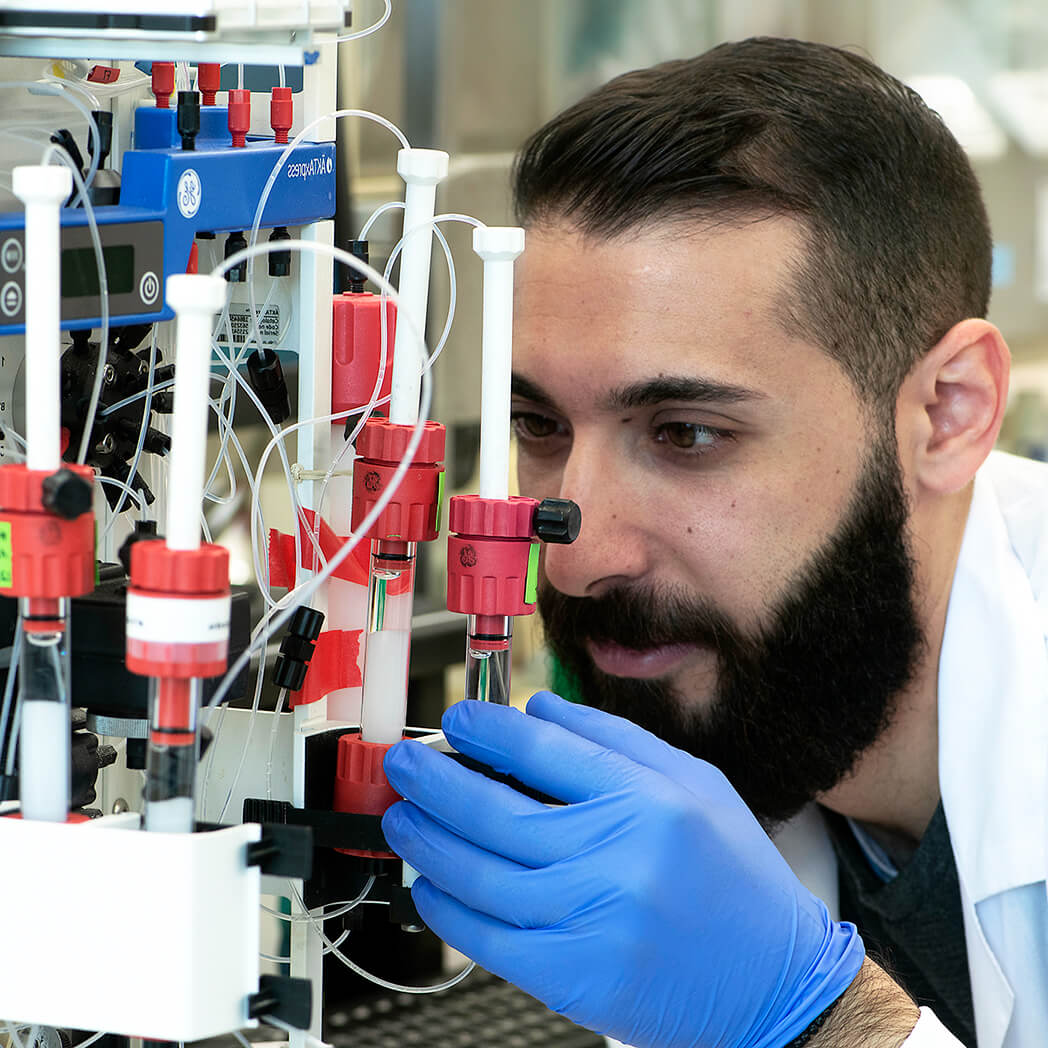Overview
Cat #:
APR-008-V
Alternative Name Purinergic receptor P2X7, P2RX7, P2Z, ATP receptor
Lyophilized Powder yes
Type: Polyclonal
Host: Rabbit
Reactivity: H, M, R
ImmunogenPeptide KKGWMDPQSKGIQTGRC, corresponding to amino acid residues 136-152 of mouse P2X7 receptor (Accession
Q9Z1M0). Extracellular loop.
Accession (Uniprot) Number Q9Z1M0 Gene ID 18439
Peptide confirmation Confirmed by amino acid analysis and mass spectrometry.
Homology Human, rat - identical; bovine - 14/17 amino acid residues identical.
Purity Affinity purified on immobilized antigen.
Form Lyophilized powder. Reconstituted antibody contains phosphate buffered saline (PBS), pH 7.4, 1% BSA, 0.05% NaN3.
Isotype Rabbit IgG.
Label mFluor™ Violet 450. Maximum absorption 405 nm and maximum emission 445 nm. These spectral characteristics make it an excellent replacement for Pacific Blue™ or Brilliant Violet™ 421 dyes. For flow cytometry applications, the labeled antibody can be detected using the 405 nm laser lane and a filter set of 450/50.
Storage before reconstitution The antibody ships as a lyophilized powder at room temperature. Upon arrival, it should be stored at -20°C.
Reconstitution 15 µl or 50 µl double distilled water (DDW), depending on the sample size.
Antibody concentration after reconstitution 1 mg/ml.
Storage after reconstitution The reconstituted solution can be stored at 4°C, protected from the light, for up to 1 week. For longer periods, small aliquots should be stored at -20°C. Avoid multiple freezing and thawing. Centrifuge all antibody preparations before use (10000 × g 5 min).
Standard quality control of each lot Western blot analysis (unlabeled antibody, #APR-008), and direct flow cytometry (labeled antibody). Applications: FC, LCI
Scientific background The P2X7 receptor is a member of the ionotropic P2X receptor family that is activated by ATP. To date, this family is composed of seven cloned receptor subtypes, named P2X1-P2X7.
The different P2X receptors show distinct expression patterns. P2X1-6 have been found in the central and peripheral nervous system, while the P2X7 receptor is found in cells of the immune system, particularly antigen presenting cells, and microglia. The P2X7 receptor mediates the release of proinflammatory cytokines, stimulation of transcription factors and may also have an important role in apoptosis.1-3
Different techniques have been used to characterize the P2X7 receptor. Most of them investigated pores, ion channels (electrophysiology) and membrane alterations (calcium microfluorometry, dye uptake, membrane depolarization and ion influx analysis). With the introduction of flow cytometry, it is now possible to analyze multiple cell parameters such as cell cycle, cell membrane alteration, calcium influx and cell phenotype.4
Lyophilized Powder
For research purposes only, not for human use
Last Update: 19/02/2025
